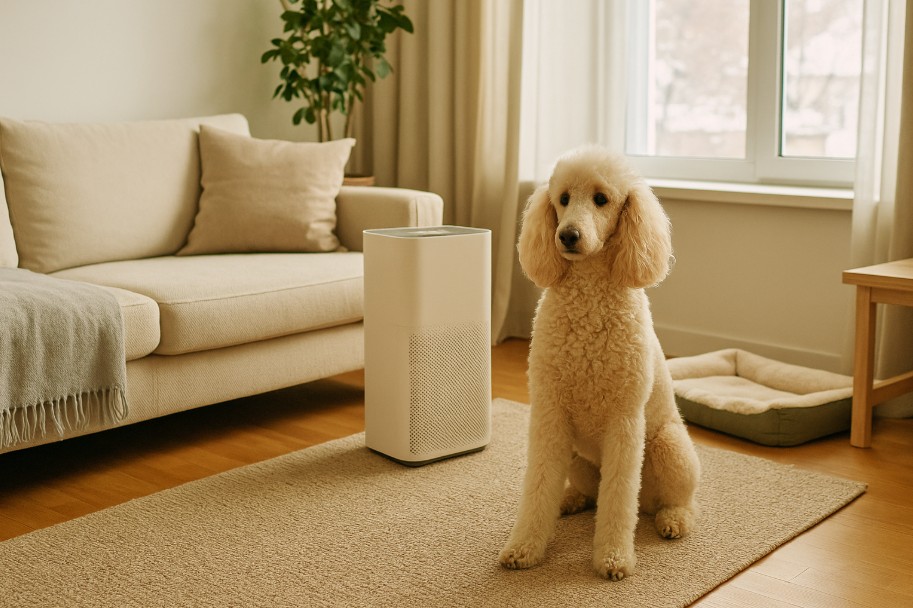Dog allergies are one of the most common reasons Canadian families hesitate to bring a pet into their home. Sneezing, watery eyes, or itchy skin can make life with a dog uncomfortable. But allergies don’t have to mean a life without pets. With the right grooming habits, cleaning routines, and smart preparation, many allergy-sensitive families live comfortably with dogs every day.
This guide dives into practical, evidence-based tips to help you minimize allergens and enjoy life with your pup.

A common question that you may ask is “Are hypoallergenic dogs completely allergy-free?”
Answer: No dog is 100% allergy-free, but hypoallergenic breeds shed less and release fewer allergens, making them easier for sensitive families to manage.
Consistent grooming is the first defense against allergens in your home.
Bathing helps rinse away allergens before they spread around your condo or home.
Even with a hypoallergenic dog, allergens build up indoors. Consistent cleaning reduces exposure.
Every person’s allergies are different. Spending time with a breed before adoption is the safest way to know what you can tolerate.
Having dog allergies doesn’t mean you can’t be a pet parent. With the right strategies—regular grooming, smart cleaning routines, bathing, and a trial adoption approach—you can create a comfortable, allergy-friendly home.
Hit the trails with confidence! Our guide to the best dog leashes for hiking in Canada breaks down the top leash types - from hands-free to reflective - and shares expert tips for safe, comfortable adventures with your pup. Featuring trusted Canadian gear from Rocky Mountain Dog, this post helps you choose durable, trail-tested leashes built for every season and terrain.
Discover why Labradors thrive on fresh, whole-food meals tailored to their active lifestyle. This guide breaks down the best fresh dog food options for Labrador Retrievers in Canada, explains why balanced nutrition matters, and highlights top NutriCanine recipes made with human-grade ingredients. Learn how to transition your Lab safely to fresh food, manage their calories, and support long-term health - all while keeping mealtime easy and convenient with Canadian delivery from NutriCanine.
This article explores the best greeting exercises to stop dogs from jumping, barking, or biting when meeting people. It explains why dogs act out during greetings - often from excitement or overstimulation - and provides step-by-step training tips to promote calm behavior.
Discover practical and creative ways to keep your dog active indoors this winter. From games and training to DIY enrichment, keep your Canadian pup happy and healthy no matter how low the temperature drops.
When winter hits, knowing your dog’s limits is key. This vet-informed guide explains how cold is too cold for different breeds, the warning signs of overexposure, and simple tips to keep your pup warm and safe during chilly walks.